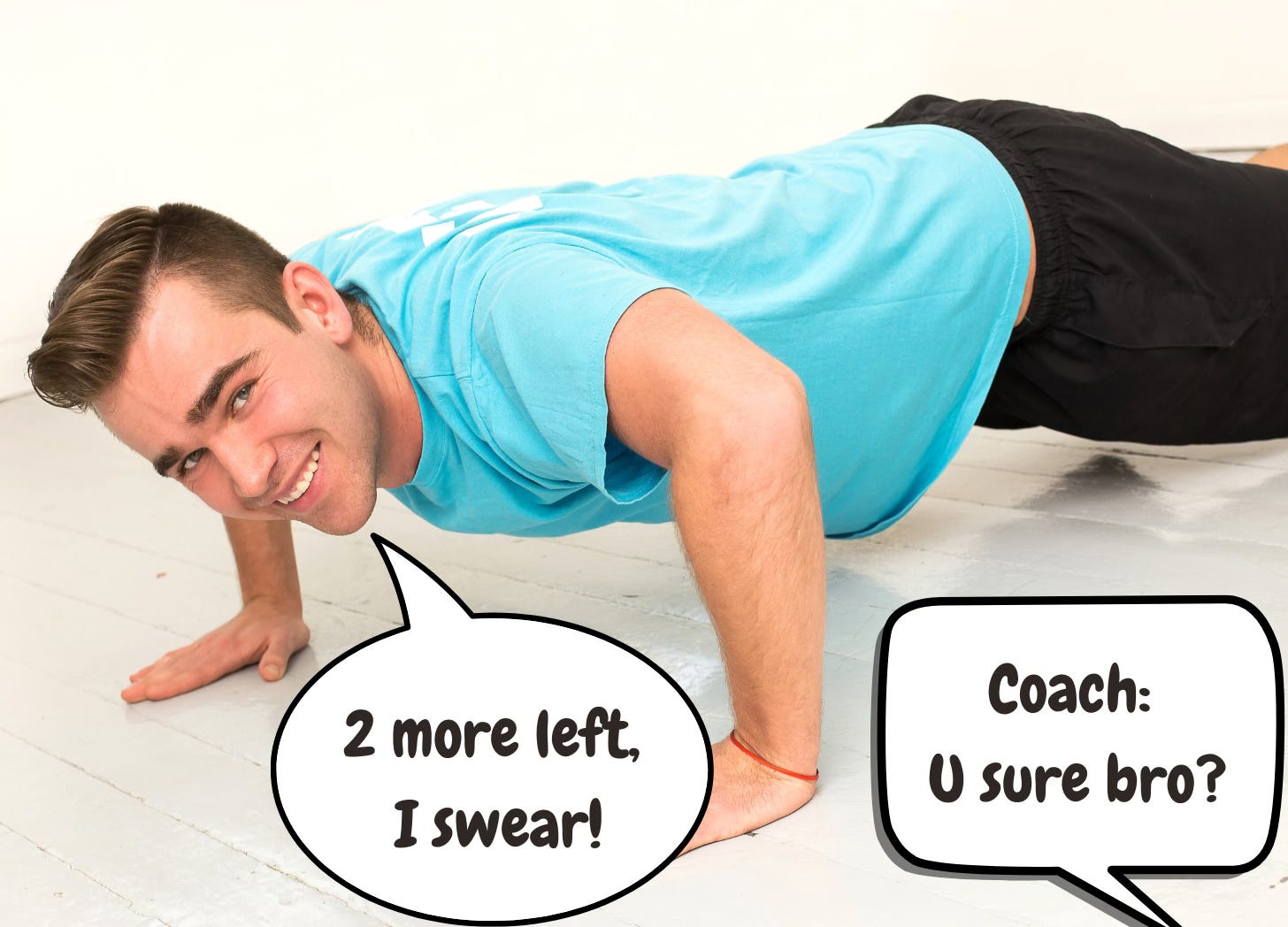
Maximising hypertrophy, or muscle growth, requires more than just showing up at the gym and lifting weights. A critical factor in achieving this goal is training close to or until failure on any given exercise. However, many people worry they aren’t pushing themselves hard enough or aren’t sure how to accurately gauge their effort. Therefore, understanding the concept of Reps-In-Reserve (RIR) and learning how to correctly estimate it can significantly enhance the effectiveness of your workouts.
The Importance of Training to Failure
Training to failure means performing an exercise until you cannot complete another repetition with good form. This approach is crucial for muscle hypertrophy because it ensures that you’re recruiting and fatiguing as many muscle fibers as possible. When muscles are pushed to their limits, they experience increased mechanical tension; one of the primary mechanisms that stimulates muscle growth and adaptation.
However, the challenge lies in knowing whether you’re genuinely pushing yourself hard enough. This is where understanding and applying the concept of Reps-In-Reserve (RIR) comes into play.
Understanding Reps-In-Reserve (RIR)
Reps-In-Reserve (RIR) is a way to measure how close you are to reaching muscular failure during a set. It refers to the number of additional repetitions you could perform at the end of a set before reaching failure. For example, if you’re bench pressing 100 kilograms and stop at 8 reps but believe you could have done 10 reps before failing, you have 2-RIR.
Another related concept is the Rate of Perceived Exertion (RPE), which scales your effort level out of 10. An RPE of 8, for instance, indicates that you could have done 2 more reps (10 minus 8 equals 2-RIR).
Research Insights on Gauging RIR
Correctly estimating RIR is vital for optimising your training. Research1 has shown that most people are surprisingly accurate in gauging their RIR. On average, individuals tend to underestimate their performance by just one rep. This means that if you think you can do one more rep, you probably could do two.
Interestingly, this accuracy tends to be greater in sets of 12 repetitions or fewer. For higher repetition sets, the discomfort and burn associated with fatigue may make it harder to judge how close one is to true failure, often leading to underestimations of 3 to 5 reps.
Additional findings from the research include that the training status of an individual does not significantly affect their ability to estimate RIR. Whether you’re a beginner or an advanced athlete, your accuracy in estimating RIR is relatively similar, although there may be a slight learning effect with experience.
Moreover, the nearer you are to failure, the more accurate your RIR estimation tends to be, and training with heavier weights further improves this accuracy. As you progress through your sets, your ability to estimate RIR also improves, with greater accuracy typically observed in later sets compared to the first set.
Practical Recommendations
For lower rep sets (<12): Train one rep closer to failure than you think.
For higher rep sets (>12): Aim for 3-5 additional reps.
Use failure sets as reference points: Train to failure occasionally to improve your understanding and accuracy of RIR, preferably in your final set.
Summary of Key Points
Training to Failure: Essential for muscle growth, ensures maximum muscle fibre recruitment.
Reps-In-Reserve (RIR): Measures how close you are to failure, crucial for effective training.
Accuracy of RIR Estimation: Research shows most people are only off by one rep, with higher accuracy in sets of 12 reps or fewer.
Halperin, I., et al. “Accuracy in Predicting Repetitions to Task Failure in Resistance Exercise: A Scoping Review and Exploratory Meta-Analysis.” Sports Medicine, vol. 52, no. 2, 20 Sept. 2021, pp. 377–390, https://doi.org/10.1007/s40279-021-01559-x.




